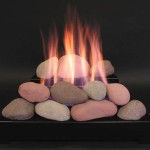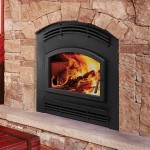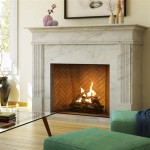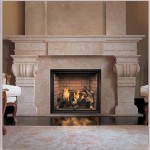Metal Fireplace Screen: Protection, Style, and Functionality
A metal fireplace screen is a protective barrier placed in front of a fireplace opening. Its primary function is to contain sparks and embers that might otherwise escape and pose a fire hazard. Beyond safety, metal fireplace screens offer aesthetic value, contributing to the overall style and ambiance of a living space.
These screens are fabricated from various types of metal, including wrought iron, steel, stainless steel, and brass, each offering distinct properties and visual characteristics. The choice of metal often dictates the screen's durability, resistance to heat, and overall appearance. The design of metal fireplace screens ranges from simple, functional styles to highly decorative and ornate pieces, reflecting the homeowner's personal preferences and interior design.
The use of a metal fireplace screen is crucial for maintaining a safe and controlled fire environment. It prevents potentially hazardous debris from entering the room and protects flooring, furniture, and occupants from accidental burns or fire ignition. In addition to safety, a well-chosen metal fireplace screen can serve as a focal point, enhancing the visual appeal of the fireplace and complementing the room's décor. The installation of a metal fireplace screen is generally straightforward and requires minimal maintenance.
Key Points Regarding Metal Fireplace Screens:
Safety and Protection
The primary and most important function of a metal fireplace screen is safety. An open fireplace presents a significant fire risk due to the potential for escaping sparks, embers, and rolling logs. These hazards can ignite flammable materials in the vicinity, leading to property damage and personal injury. A metal fireplace screen acts as a physical barrier, effectively containing these hazards within the firebox.
The mesh construction of most metal fireplace screens is designed to trap sparks and embers while allowing heat to radiate into the room. The mesh size is carefully calibrated to prevent even small, glowing particles from passing through. This is particularly important when burning hardwoods, which tend to produce more sparks than softwoods. The effectiveness of the screen depends on the integrity of the mesh and the overall construction of the screen.
Furthermore, a metal fireplace screen can prevent children and pets from accidentally coming into contact with the fire. While supervision is always necessary, the screen provides an additional layer of protection, reducing the risk of burns and other injuries. The weight and stability of the screen also contribute to its safety performance, preventing it from being easily knocked over or displaced.
The material used in the screen construction plays a key role in its ability to withstand high temperatures. Metals like steel and wrought iron are commonly used due to their high melting points and resistance to deformation under heat stress. The frame of the screen is typically reinforced to prevent warping or buckling, ensuring that the screen remains effective and safe over time.
Regular inspection of the metal fireplace screen is recommended to ensure its continued functionality and safety. Check for any signs of damage, such as rust, holes in the mesh, or loose connections. Damaged screens should be repaired or replaced promptly to maintain their protective capabilities.
Aesthetic Enhancement and Design
Beyond its functional role, a metal fireplace screen serves as a decorative element, contributing to the overall aesthetic of the room. The design options are virtually limitless, ranging from simple, understated styles to elaborate, ornate designs. This allows homeowners to select a screen that complements their existing décor and reflects their personal taste.
Metal fireplace screens are available in a variety of finishes, including black, bronze, brass, silver, and painted colors. The finish can be chosen to match the fireplace surround, the hardware in the room, or other decorative elements. A black finish is a classic choice that blends well with most styles, while brass and silver finishes can add a touch of elegance and sophistication.
The screen's design can incorporate various decorative motifs, such as floral patterns, geometric shapes, or historical emblems. The choice of motif can reflect the homeowner's interests or complement the architectural style of the house. Traditional homes might benefit from screens with intricate scrollwork, while modern homes might call for screens with clean lines and minimalist designs.
Some metal fireplace screens feature doors that allow easy access to the firebox for tending the fire without removing the entire screen. These doors can be hinged or sliding, and they often include handles that are designed to remain cool to the touch. This feature adds convenience and practicality to the screen.
The size and proportion of the metal fireplace screen are important considerations when selecting a screen. The screen should be wide enough to fully cover the fireplace opening and tall enough to prevent embers from escaping over the top. A screen that is too small will not provide adequate protection, while a screen that is too large will look disproportionate and detract from the overall aesthetic.
Types of Metal Fireplace Screens
Metal fireplace screens are available in several different styles, each offering unique features and benefits. The choice of style depends on the size and shape of the fireplace opening, the desired level of protection, and the homeowner's aesthetic preferences.
Single-Panel Screens: These are the most basic type of metal fireplace screen, consisting of a single panel of mesh framed by metal. They are typically lightweight and easy to move, making them a convenient option for occasional use. Single-panel screens are best suited for smaller fireplaces and situations where the fire is not frequently used.
Multi-Panel Screens: These screens consist of two or more panels that are hinged together. The side panels can be adjusted to fit the width of the fireplace opening, providing a more customized fit than single-panel screens. Multi-panel screens are more stable than single-panel screens and offer greater protection against escaping sparks and embers.
Bi-Fold Screens: A type of multi-panel screen, bi-fold screens typically consist of two panels hinged in the center that can be folded for easy storage. This design is often preferred for its compact storage and adjustable width.
Tri-Fold Screens: These screens consist of three panels that are hinged together. The side panels can be adjusted to fit the width of the fireplace opening and provide added stability. Tri-fold screens are a good choice for wide fireplaces.
Arched Screens: These screens feature an arched top, which can add a touch of elegance to the fireplace. Arched screens are available in single-panel and multi-panel designs.
Fireplace Doors: Technically, these are not just screens, but rather glass or metal doors that enclose the fireplace opening. While offering excellent protection and heat retention, they are generally more expensive and require more involved installation.
Materials and Construction
The materials used in the construction of a metal fireplace screen directly impact its durability, heat resistance, and overall appearance. Common materials include wrought iron, steel, stainless steel, brass, and sometimes cast iron components.
Wrought Iron: Known for its strength, durability, and distinctive texture, wrought iron is a popular choice for fireplace screens. It can be easily shaped and formed into intricate designs, making it a versatile material for both traditional and contemporary styles. Wrought iron screens are typically finished with a protective coating to prevent rust and corrosion.
Steel: Steel is another strong and durable material that is commonly used in the construction of fireplace screens. It is less expensive than wrought iron but still offers excellent heat resistance and structural integrity. Steel screens are often powder-coated or painted to enhance their appearance and protect them from rust.
Stainless Steel: Stainless steel is a highly durable and corrosion-resistant material that is ideal for use in harsh environments. It is more expensive than steel but offers superior resistance to rust and staining. Stainless steel screens are often used in modern and contemporary settings.
Brass: Brass is a decorative metal that is often used for accents and trim on fireplace screens. It is not as strong or heat-resistant as steel or wrought iron but adds a touch of elegance and sophistication to the design. Brass screens are typically polished to a high sheen and may require occasional cleaning to maintain their luster.
The mesh of the screen is typically made of woven steel or stainless steel wire. The mesh size is carefully selected to prevent sparks and embers from passing through while allowing heat to radiate into the room. The mesh is typically attached to the frame using welding or rivets.

Plow Hearth Large Tree Of Life Fireplace Metal Fire Screen With Door Target

Large Cast Iron Scrollwork Fire Screen With Doors Black Plow Hearth

Deco Metal Fireplace Screen West Elm

Gunmetal Fireplace Screen Reviews Cb2

Plow Hearth Metal Fireplace Screen Crest Arch Black 44 W X 33 H Flatguard Spark Guard Indoor Grate Iron Fire Place Cover Wood Burning Stove Decora

Valante Fireplace Screen Iron Accents

Black Metal Ornate Fire Screen Windsor Browne

Fireplace Screens Mild Steel And Laser Cut Metal Art Fs 45 Nederland

Kingdely Large Black Powder Coated 1 Panel Steel Frame Metal Mesh Free Standing Spark Guard Fireplace Screen With Hinged Doors Tdjw Ebkf170009 The Home Depot

Evergreen Black Metal Crest 1 Panel Fireplace Screen With 2 Doors Large 47m2462 The Home Depot
Related Posts








